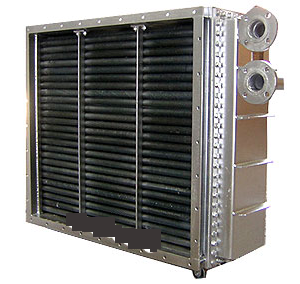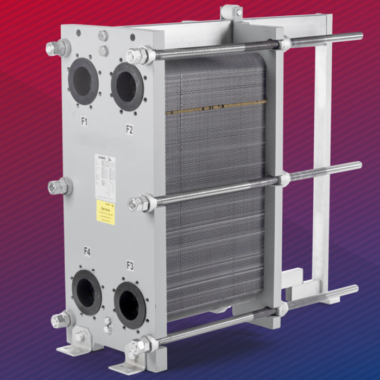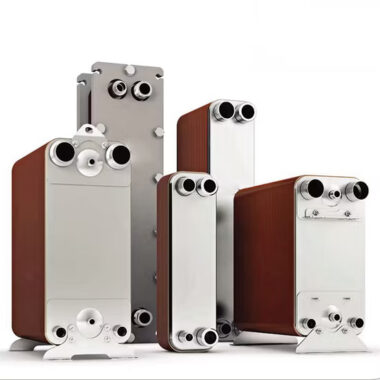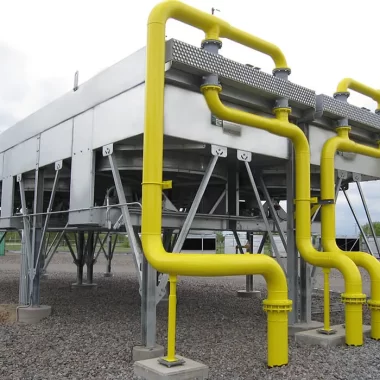Extruded Finned Tubes
Extruded Finned Tubes

Extruded Finned Tubes
Extruded finned tubes are bimetallic tubes whose outer aluminium surface is finned by cold plastic deformation. There are two major types of finned tubes available with us, single metal tubes (also called mono metallic fin tube) and Bimetallic tube (composite extruded fin tube) . The former uses Copper, Aluminum, and Copper Nickel alone.
Suitable materials will be selected depending on your process conditions. Aluminum, admiralty brass, titanium, monel or hastelloy are some examples of the material which can be used. Extruded Fin Tubes Ask Price Success can be easily achieved, but to maintain it for lifelong is difficult, The strip winding technology provides different types of fins: L-Fin, LL-Fin, KL-Fin.

Extruded Finned Tubes
Tension wound finned tubes, embedded finned tubes and extruded finned tubes are main devices for air coolers and the common application fields are:
- Heat exchangers for power plants (electric, nuclear, thermal and geothermal power plants)
- Steam condensate systems
- Chemical and petrochemical industry
- Food processing plants and refrigeration technology
- Industrial (steel mills, incinerators, gas compression facilities).
tension wound finned tubes, embedded finned tubes and extruded finned tubes.
Tension wound finned tubes are formed by winding a strip made of aluminium or copper around the tube under tension. The strip winding technology provides different types of fins: L-Fin, LL-Fin, KL-Fin.
Embedded fins (G-Fins) are made by winding aluminium or copper strip into a helical groove machined on the outer surface of the tube.Extruded finned tubes are bimetallic tubes whose outer aluminium surface is finned by cold plastic deformation.lies Thermofin’s aluminum, the lead actors on which rests the efficiency and longevity of our units. Their particular design, mono or bimetal, provides great resistance (fin stiffness) as well as exceptional heat transfer characteristics (longevity, temperature, range, etc.). The mechanical bond joining liner tubes and aluminum wall offers superior durability and insures no corrosion occurs between the fins and the tubes, a key factor in permitting the delivery of the specified duty by your heat exchanger. Extend the lifetime of your exchangers and improve their efficiency and reliability by combining them with the best technology,

Are bimetallic tubes whose outer aluminium surface is finned by cold plastic deformation. There are two major types of finned tubes available with us, single metal tubes (also called mono metallic fin tube) and Bimetallic tube (composite extruded fin tube) . The former uses Copper, Aluminum, and Copper Nickel alone.
Suitable materials will be selected depending on your process conditions. Aluminum, admiralty brass, titanium, monel or hastelloy are some examples of the material which can be used. Extruded Fin Tubes Ask Price Success can be easily achieved, but to maintain it for lifelong is difficult, The strip winding technology provides different types of fins: L-Fin, LL-Fin, KL-Fin.
Tension wound finned tubes, embedded finned tubes and are main devices for air coolers and the common application fields are:
- Heat exchangers for power plants (electric, nuclear, thermal and geothermal power plants)
- Steam condensate systems
- Chemical and petrochemical industry
- Food processing plants and refrigeration technology
- Industrial (steel mills, incinerators, gas compression facilities).
tension wound finned tubes, embedded finned tubes and extruded finned tubes.
Tension wound finned tubes are formed by winding a strip made of aluminium or copper around the tube under tension. The strip winding technology provides different types of fins: L-Fin, LL-Fin, KL-Fin.
Embedded fins (G-Fins) are made by winding aluminium or copper strip into a helical groove machined on the outer surface of the tube.Extruded finned tubes are bimetallic tubes whose outer aluminium surface is finned by cold plastic deformation.lies Thermofin’s aluminum extruded finned tubes, the lead actors on which rests the efficiency and longevity of our units. Their particular design, mono or bimetal, provides great resistance (fin stiffness) as well as exceptional heat transfer characteristics (longevity, temperature, range, etc.). The mechanical bond joining liner tubes and aluminum wall offers superior durability and insures no corrosion occurs between the fins and the tubes, a key factor in permitting the delivery of the specified duty by your heat exchanger. Extend the lifetime of your exchangers and improve their efficiency and reliability by combining them with the best technology,





